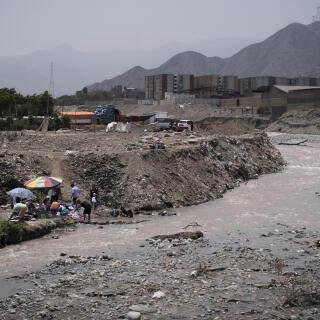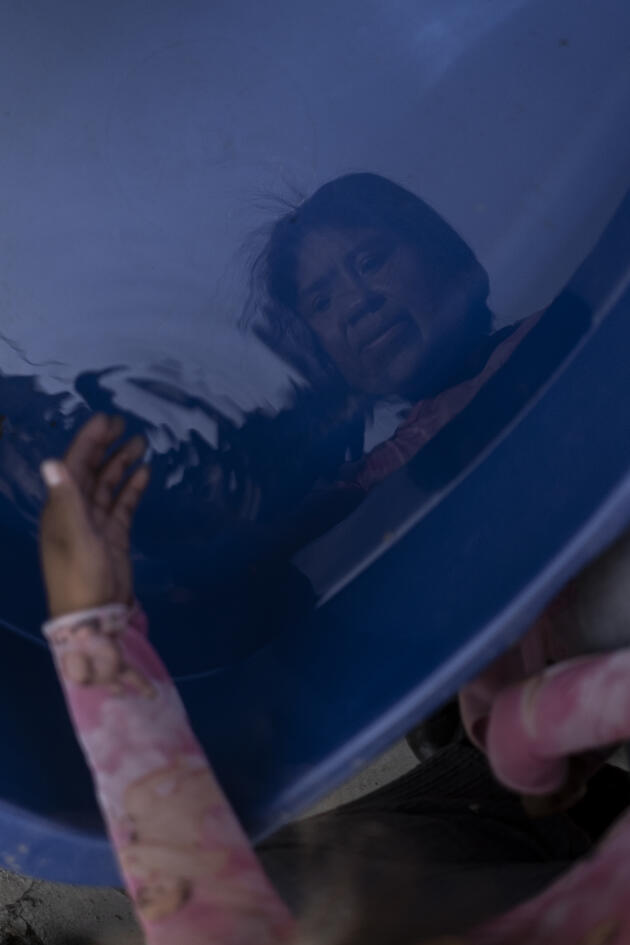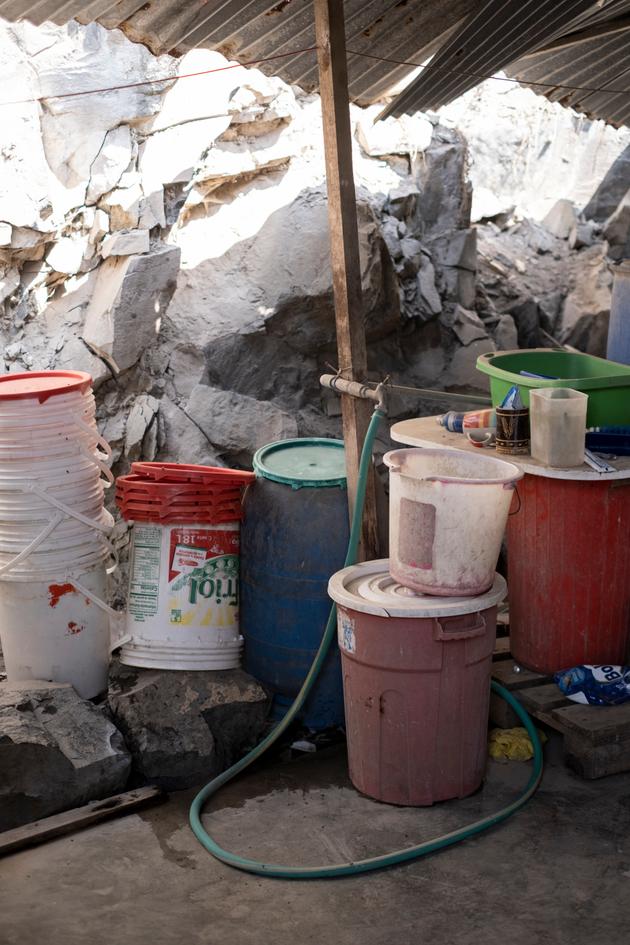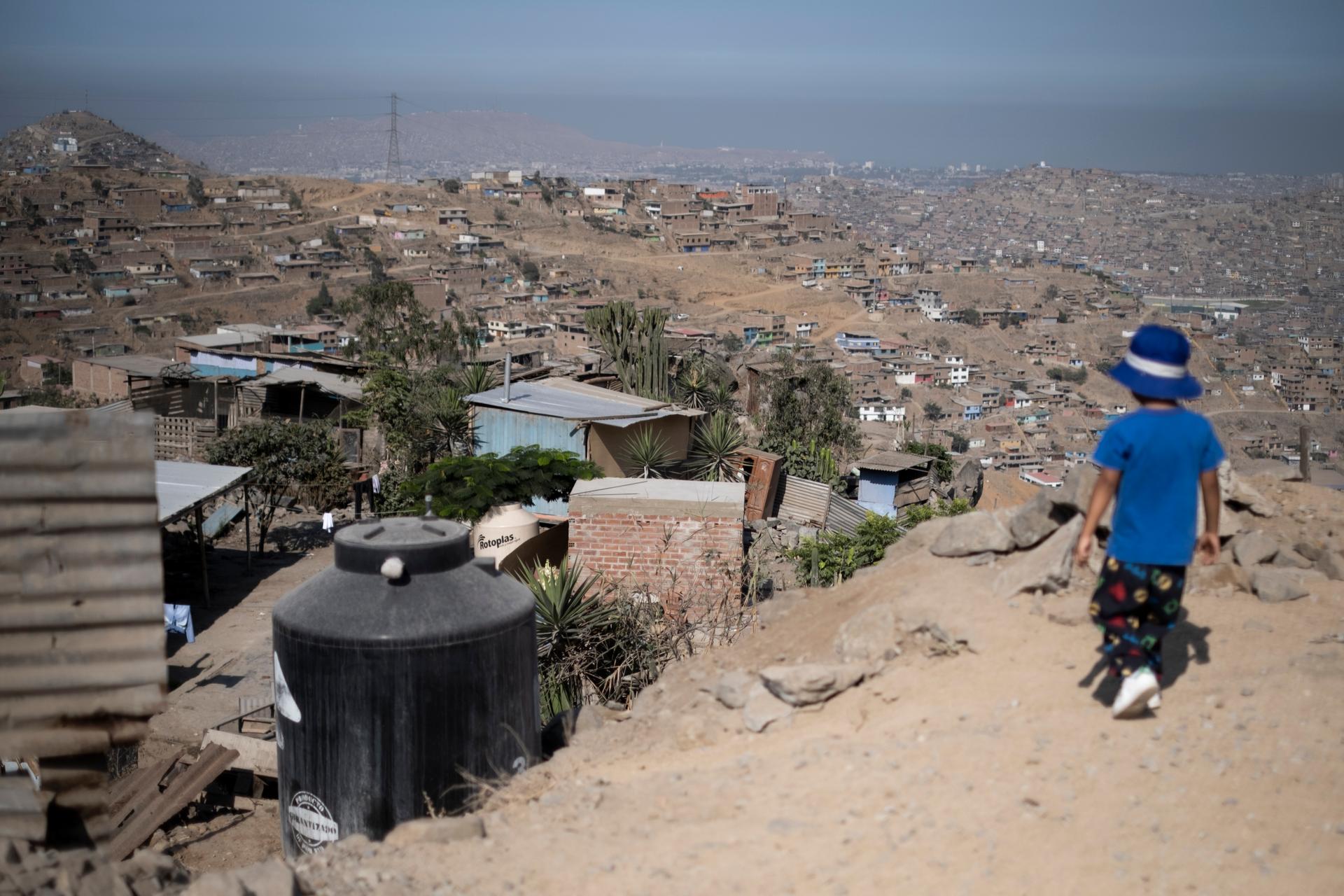


Peru: in Lima, the challenge of access to drinking water amidst climate change and urban growth
FeatureOne and a half million inhabitants of the country's capital don't have access to drinking water, as 'more intense, longer and more frequent' drought episodes point to a widespread water crisis.
It's barely 9:00 am in the Peruvian capital and the temperature is already 26°C at the beginning of March. In the heart of the austral summer, Brigida Yana Condori, in her 30s, pauses to mop her temples as she climbs the row of stairs to her home in the Villa Maria del Triunfo district on the outskirts of Lima. In the courtyard of her house, she lifts the lid of the tank containing her water supply for the month: 1,100 liters, which she has to share with her two children – aged 4 and 11 – and her brother.

Around her are buckets: one for cooking, one for washing. Wastewater is reused for cleaning. Not a drop is wasted. "Welcome to the paraiso ("paradise"), the name of her asentamiento ("urban settlement")," exclaims this resident in a burst of laughter. A cleaning lady in town, she lives in a small house made of planks. Her neighborhood is not connected to the drinking water distribution system managed by the public company Sedapal. "Our paradise is pretty miserable, isn't it?" she says with a smile.
For her supply, she depends on her neighbors, from whom she buys water a few yards down the road, or on the random passage of the tanker truck. The price charged by the latter, however, is prohibitive: up to 10 times more expensive than piped water.
Another concern is the spread of dengue fever, which is proliferating throughout Latin America. Nearly 1.9 million cases have been recorded. In Peru, a state of emergency has been declared in some 20 departments, including Lima. Brigida knows that storing water is not ideal. "My 4-year-old son gets stung, but you need water to live. We would so much like to benefit from a water and drainage project. As the state says, it's a right that every Peruvian has but it doesn't seem to apply to us."
No sewage system
Lima's water problem is mainly confined to the outskirts of the capital. The hills surrounding the city center are home to a vast number of precarious housing units, made of sheet metal and planks, and criss-crossed by a maze of staircases and stony dirt roads. There is no mains drainage here, and sometimes even no electricity. In the distance, to the west, the Pacific Ocean can be seen behind a cloud of smog. To the east, the first mountains of the Andes can be seen.


Lima is the world's second-largest desert city, after Cairo, Egypt. Rainfall is almost non-existent: less than 15 millimeters per year on average. Since the mid-20th century, its growth has been exponential, notably due to migration from the Andes, and today it is home to over 10 million inhabitants. One and a half million of them have no access to drinking water.
You have 70.47% of this article left to read. The rest is for subscribers only.
